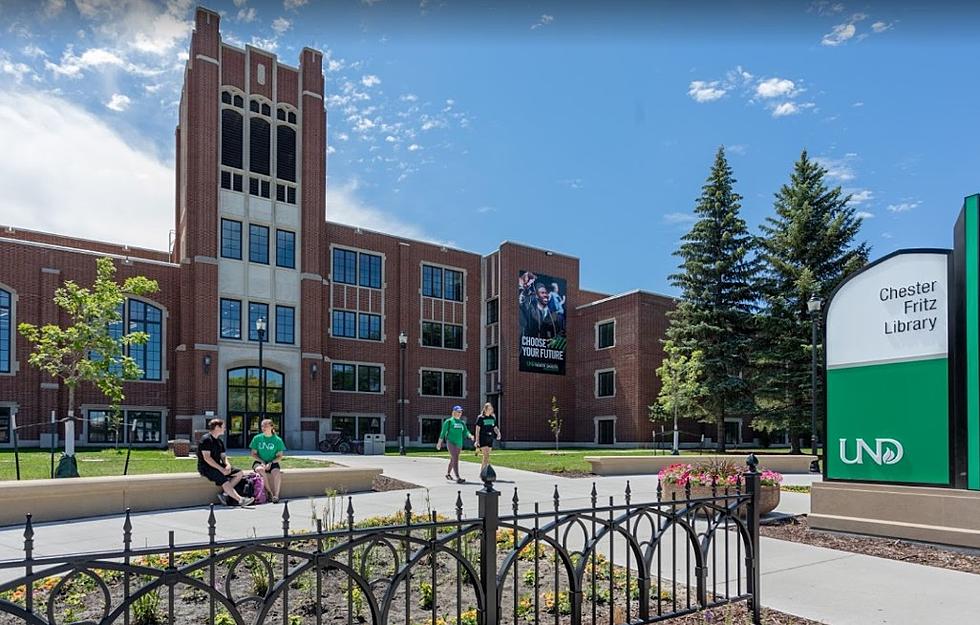
North Dakota Universities Enroll Less North Dakota Residents Year After Year
A new report from the Jack Kent Cooke Foundation finds that state funding is hurting in-state acceptance rates across the country.
The study concludes that North Dakota State University is one of the bigger 'offenders' of this.
We looked at the data which is provided publicly by NDSU and have found that the University has in fact consistently enrolled less North Dakota residents over the years.
The reason for this is allegedly, according to the Jack Kent Cooke Foundation, due to cuts in the education budget in North Dakota. NDSU can earn more money from out-of-state residents who are forced to pay higher tuition fees.
**Below is the percentage of North Dakota residents that enrolled into NDSU in the Fall semesters between 2007 and 2016.
2007 - 50.2%
2008 - 47.84%
2009 - 46%
2010 - 43.8%
2011 - 41.8%
2012 - 40.6%
2013 - 39.4%
2014 - 40.1%
2015 - 41%
2016 - 41.3%
**The above numbers represent percentages of students enrolled. Students who are admitted do not necessarily choose to enroll.
"This study exposes the unjust treatment very smart, hardworking students get when they're denied entry to their state flagship universities simply because they don't pay as much as out-of-state students," said Jack Cooke Foundation Executive Director Harold O. Levy in a press release. "Students should be judged and admitted based on merit, not money."
Meredith Sherlin, the Director of Admissions says that the Jack Cooke Kent report was not really valid and that students are accepted based on merit. Sherlin says that NDSU has guidelines that are set forth by the state board of higher education and students who meet that guideline, get accepted into NDSU as NDSU is only 'moderately selective' when it comes to admitting students.
NDSU looks at student's ACT scores, GPA's, and the courses they take in High School. Students who meet the guidelines are admitted. Obviously students who are admitted don't necessarily choose to enroll.
Sherlin says NDSU denies about four to five percent of students that apply to the school. Sherlin also says that Minnesota has about 10 times the amount of high school graduates as Minnesota and a large portion of out-of-state students that enroll in NDSU are from Minnesota.
Sherlin also says that NDSU's location, being on the border of North Dakota and Minnesota helps appeal to students from Minnesota. Additionally, the school appeals to students who don't necessarily want to go to a school as large as the University of Minnesota but want a similar education.
NDSU also has more North Dakota students enroll than any other school in the North Dakota University System according to Sherlin.
Of course the University of North Dakota is not immune to thee same potential budget restrictions in North Dakota. The school was not mentioned by name in the Jack Kent Cooke Foundation study but their North Dakota resident enrollment rate has also declined. We were only able to get data from 2010 on for UND, but here are the percentage of North Dakota residents enrolled in the Fall semesters since 2010. Data was not immediately available for students who were admitted.
2010 - 44%
2011 - 41.5%
2012 - 39.5%
2013 - 40.2%
2014 - 39.6%
2015 - 39.4%
2016 - 39.7%
Peter Johnson, a spokesperson for the University of North Dakota says that the admissions decisions are not based on budget. He released this statement to us via email.
We don't make admissions decisions based on budget. Nor are there any quotas at play. We recruit heavily from particularly North Dakota and Minnesota. Both have access to the high quality education we offer at what really is a rather good value. Minnesota students, as you may know, get access to North Dakota schools through a special tuition rate due to the annual North Dakota-Minnesota tuition reciprocity that is handled at the North Dakota University System level.
For a number of years, the [sic] it was clear looking at the state demographics that the number of graduating high school seniors was decreasing. In fact, before the oil boom, the forecast for the number of high school graduates was to continue to spiral down in terms of numbers. The students themselves are outstanding. An increase in the number of Minnesota students matriculating at UND has to a large degree offset the predicted decrease in North Dakota students. Exactly how the oil boom affected things, I'm not sure. There was certainly in [sic] influx of people and some percentage of the influx would have included increases of students at the high school level, but I'm tempted to suggest that most of the increases was of students in the lower and middle school ages. That would seem to me to equate most closely to what I suspect was the average age of new residents (permanent or otherwise) to the state.
In any case, the changes in percentages that you note are not due to any change in UND's policies. I do believe that more and more Minnesota students are finding North Dakota schools (not just UND) more appealing because of the high-quality programs and the excellent value.
Students who want to take advantage of the tuition reciprocity that Johnson refers to need to apply for it and they can do so at this website.
Editor's Note: This story has been updated to reflect responses from UND and NDSU with both schools refuting the conclusion of the study presented by the Jack Kent Cooke Foundation.
More From 96.5 The Walleye









